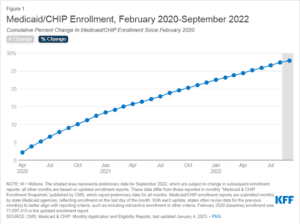New York represents one of the country’s largest populations of Medicaid beneficiaries, according to Medicaid.gov. Keeping up with the payment and policy updates that the New York State Department of Health (NYSDOH) sets for Medicaid providers is no easy task for payers trying to successfully serve this growing population. In fact, in a 2022 survey of more than 400 payers offering Medicaid as a line of business, the three most popular challenges payers faced were all tied to staying compliant with all of the changes:
- 74% = staying compliant with changing reimbursement policies
- 62% = installing updates to the fee schedule in a timely manner
- 52% = keeping up with changing fee schedules
That same study revealed how manual-intensive it is for payers to keep their Medicaid program fee schedules and policies up-to-date, with 84% claiming that they do it “mostly manually.”
Due to the complex nature of Medicaid, payers have historically relied on a patchwork of disparate workflows and vendor solutions to provide pricing for their Medicaid lines of business. Today, Source is taking its expertise developed over decades of supporting Medicare reimbursement and applying that same depth and breadth of content to Medicaid. New York is the latest state supported by HealthEdge Source.
The uniqueness of state Medicaid programs is what makes it so challenging for many solutions to keep up. One size does not fit all, and change is constant. Each state has its own set of rules that payers must play by so there are very few common rules that can be applied. For example, in New York, the state doesn’t post nursing facility rates by NPI or Medicaid ID, but by operating certificate. Many states are still using grossly outdated Medicare guidelines and prices. And when you combine these unique complexities with those of the multiple Managed Care Organizations (MCOs), it can quickly become overwhelming to manage, resulting in non-compliance and inaccurate payments.
HealthEdge Source: How it Works
When it comes to payment integrity for Medicaid programs, the Source experts have payers covered with two dedicated teams – one for data research and new developments and a second for maintaining the Medicaid edits currently available. Armed with advanced web monitoring tools and seasoned research analysts, Source delivers updates to customers every two weeks. And because it is a cloud-based solution, those updates are automatically applied. That means IT teams are free to focus on strategic initiatives instead of trying to maintain complex pricing.
Many industry experts believe that state Medicaid programs will continue to become increasingly complex as the necessity of finding more cost-effective ways to deliver high quality care becomes more urgent due to rising costs. To learn more about how Source can help your organization stay on top of the ever-evolving New York Medicaid program requirements, visit Source Medicaid Reimbursement.







